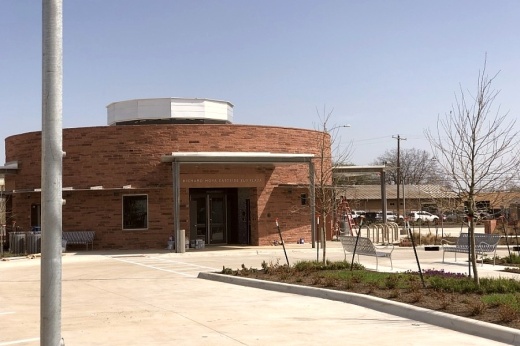In a nutshell
“These funds will help Texans in rural and urban communities access safe and reliable mobility options that improve quality of life and enhance economic opportunity,” Texas Transportation Commissioner Alvin New said in an Aug. 1 news release. “These programs connect people with their community and give them a way to get around when they may have no other option.”
The funding will be used to help transit agencies:
- Construct or improve public transit facilities and fund over 150 new buses for older fleets
- Increase long-distance connections between rural and urban metropolitan areas along 15 routes across the state
- Increase the quality of services for people that regularly use public transit—several regions will see expanded services for seniors and individuals with disabilities
The majority of funding was allocated to rural transit districts; however, various transportation entities across the Austin, Houston and San Antonio areas will also receive funding.
Greyhound—a large recipient of the state funding—said in a statement the company would use the money to improve fair access to transportation between major cities.
“These funds will enable us to maintain routes serving rural communities throughout Texas, ensuring that residents can access both metropolitan areas within the state and destinations nationwide,” Greyhound spokesperson Ike Hajinazarian said. “At Greyhound, we are committed to connecting communities across North America and value the collaboration with our government partners in achieving this objective."
The Eastside Bus Plaza in Austin is slated for improvements, including upgrades to accommodate more intercity passengers, according to a TxDOT news release.
Over $2.7 million was set aside for these improvements and operating cost assistance on four intercity bus routes in Central Texas. The funds will also help the Capital Area Rural Transportation System purchase four replacement vehicles for those routes.
Zooming in
According to TxDOT, the Alamo Area Council of Governments, the Capital Area Metropolitan Planning Organization, the Central Texas Council of Governments and the Houston-Galveston Area Council will each receive funding to implement public transportation plans that support seniors, people with disabilities, people with limited English proficiency, veterans, job seekers and children.
The state is also distributing:
- $860,000 to the Texas Transit Association, for two years of a comprehensive training program for all public transportation providers statewide
- $426,000 to the CARTS Bastrop Station Park-and-Ride Expansion Project, to add more parking spaces and adjust the layout of the parking lot at the Bastrop station, which was built in 1990
- $275,000 to Meals on Wheels Montgomery County, to replace five vehicles and support the Senior Rides program, which offers on-demand transportation for seniors and people with disabilities
- $255,000 to the Houston-Galveston Area Council, for a study evaluating connections between Houston’s outlying communities and the urban core, as current services are designed for people commuting to work and do not cater to those traveling for medical services, social services and education throughout the day
- $240,000 to the CARTS Smithville Station, to make sustainability, safety and convenience upgrades to a high-traffic transportation hub in the heart of the Austin-Houston-San Antonio triangle
- $205,000 to CARTS Planning, to design and engineer a multimodal transit station and link services between San Antonio and Houston
- $180,000 to Mounting Horizons, an independent living center in the Greater Houston area, to help increase independence for seniors and people with disabilities by expanding transportation options
- $170,885 to Bluebonnet Trails, a mental health provider serving Williamson County and the Austin area, to provide door-to-door transport and prepaid transit vouchers for people with disabilities who are unable to drive independently
- $100,000 to the CARTS rural transportation assistance program, to add an interactive trip planner to CARTS’ website to allow users to find routes, compare fares, and provide real-time service updates
- $74,622 to the Alamo Area Council of Governments, to enhance mobility for Alamo Regional Transit users through trip coordination, public education initiatives and more
The recent TxDOT funding is intended to improve and expand services for those that rely on public transportation to get to jobs, school, medical appointments and other important destinations, according to a TxDOT news release.
In addition to the recent $123 million, TxDOT also secured a $26.8 million grant from the Federal Transit Administration and $6.2 million in state funding, which will be distributed across the state.






